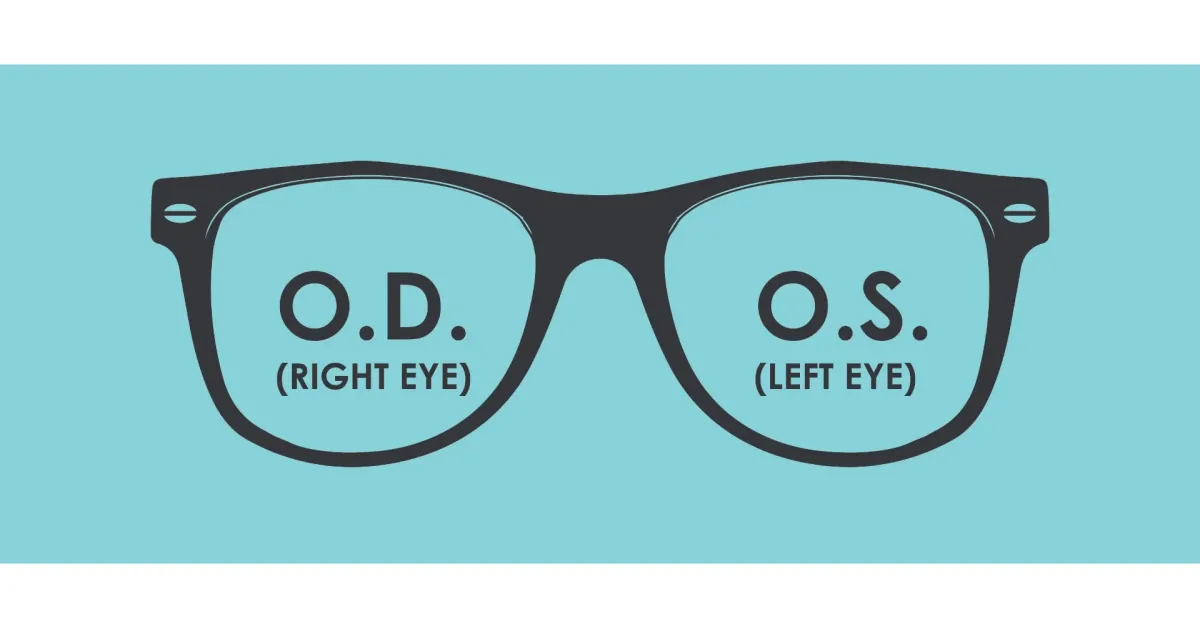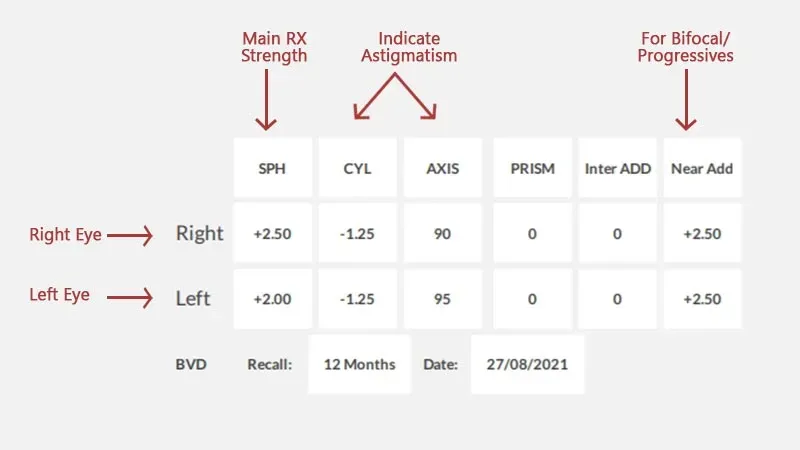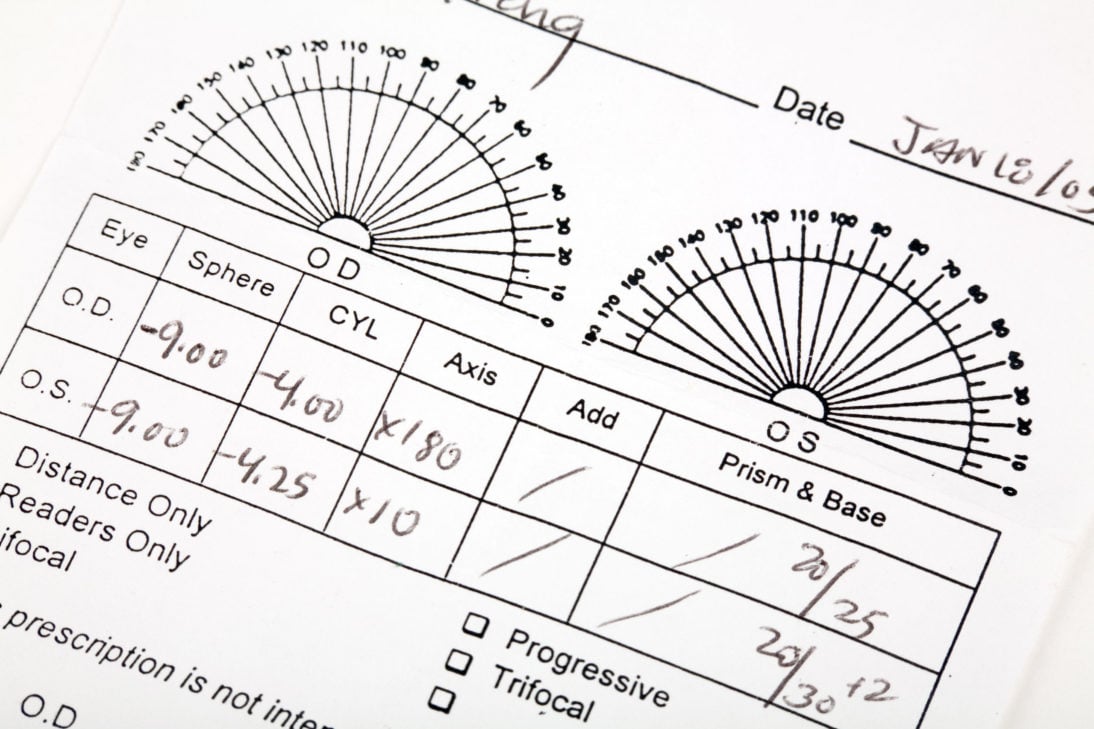OD vs OS what is it?

OD and OS are abbreviations used in eyeglass and contact lens prescriptions to indicate the right and left eye, respectively:

- OD: Short for oculus dexter, which is Latin for "right eye".
- OS: Short for oculus sinister, which is Latin for "left eye".
Some eye care professionals may use more modern abbreviations instead of OD and OS, such as "RE" for right eye and "E" for left eye. They may also use "left" or "LE" for left eye. Accurate prescriptions help ensure that eyewear fits properly and meets the needs of each eye. This is especially important when ordering eyeglasses online.
Which Eye Is OD vs. OS
First thing’s first—let’s get these eye abbreviations sorted and learn what they stand for.
OD
OD means “right eye.” OD is the traditional abbreviation used for the right eye because it’s short for oculus dexter, which means “right eye” in Latin. Sometimes, doctors will just use “RE” or “right” for the right eye.
OS
OS means “left eye.” OS is the traditional abbreviation for the left eye because it’s short for oculus sinister, which is “left eye” in Latin. Some doctors might just write “left” or use LE for “left eye.”
OU
Surprise! Here’s another eye abbreviation you might see on your prescription. OU is an abbreviation for oculus uterque, which is Latin for “both eyes.”
SPH
SPH stands for “sphere.” This abbreviation is used if vision correction is needed for either nearsightedness or farsightedness—or both. The number shown by this abbreviation refers to the lens power you’ll need to correct it.
If the number with this term is negative (indicated with a – symbol), then you’re nearsighted; if the number with this term is positive (indicated with a + symbol), that means you’re farsighted. Some prescriptions may have both positive and negative numbers, meaning you need vision correction for both your near and far vision.
CYL
CYL stands for “cylinder,” and it indicates astigmatism. You’ll only see a number with CYL if you have an astigmatism to correct. CYL numbers can be positive or negative and refer to the lens power needed to correct the astigmatism. The larger the number, the greater the astigmatism.
Axis
“Axis” is measured in degrees and refers to where an astigmatism is found on the cornea of the eye. If you have an astigmatism, there will be numbers in both the CYL and AXIS columns of your prescription.
Add
“Add” refers to the magnifying power (if any) that is added to the bottom part of a multifocal or progressive lens, most commonly used to correct presbyopia.
BI, BO, BU, or BD
Your prescription may include a column for “prism” or “base.” These are used in your prescription if a correction is needed for eye misalignment. The base value for a prism correction will be either “in” or “out,” or “up” or “down.” You might see the abbreviations BI, BO, BU, or BD respectively. You will also see a corresponding prism power associated with the base value.
PD
PD is short for “pupillary distance,” and—you guessed it—it measures the distance between your eyes’ pupils. If your prescription doesn’t include this number, try using our online tool to measure your pupillary distance yourself.
Check out our informational article if you’d like to learn more about measuring pupillary distance.
OD and OS on a Vision Prescription
Vision prescriptions usually look like a table or chart, with OD and OS along the side for the rows, and the other terms across the top for the columns. It will look something like this.

Common Lens Type Abbreviations
There are many different types of lenses for glasses, and your doctor may have used abbreviations on your prescription to note which lenses you need. So many confusing letters, we know! Hang in there—we’re almost through.
SV
SV is an abbreviation for “single vision.” This means that the lens comprises only one prescription.
BF
BF stands for “bifocal.” Bifocal lenses have two distinct prescriptions—one for seeing objects at a distance (which is at the top of the lens), and one for seeing near objects (placed at the bottom of the lens). You can spot a visible line on the lens, delineating these two areas.
TF
TF is short for “trifocal.” Trifocal lenses are similar to bifocal lenses, but they correct for three areas of vision—distance (at the top of the lens), intermediate (in the middle of the lens), and near (at the bottom of the lens). There is a visible line delineating the three separate areas of the lens.
PL or PAL
Like other multifocal lenses, progressives (or progressive addition lenses) correct vision for objects at multiple distances, but they do so without any visible lines separating the different zones of the lens. (Cool, huh? If you’re curious, check out how progressive lenses wor.)

Contact Lens Prescription Abbreviations
In addition to the terms above, prescriptions for contacts will include other unique abbreviations (listed below) relating to their fit. If you want to dive deeper, head on over to our more thorough guide on how to read a contacts prescription.
BC
BC is an abbreviation for “base curve.” This measurement refers to how flat or steep the curvature of your contact lens should be.
DIA
DIA is short for “diameter” and refers to the width of the contact. The diameter of the contact lens is measured in millimeters.
OD vs. OS Demystified
Now that we’ve clarified which eye is OD and which is OS, and introduced you to other commonly used eye abbreviations and terms, we hope you can decode your prescription with ease. All that’s left now is to find your perfect pair of eyeglasses or contacts and enjoy seeing life more clearly.